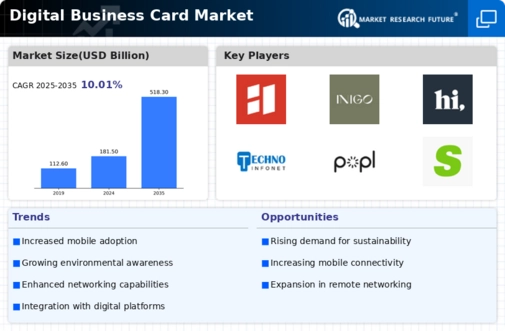Market Trends
Key Emerging Trends in the Digital Business Card Market
The switch from paper to digital business cards is a major development. Businesses are looking to digital tools to make their work easier and faster as technology continues to spread into every part of our lives. Digital business cards make it fun and easy for people to share contact information. These cards let you click on them to go to websites, social media pages, or even movies that come with your phone. This makes the game more fun and interesting than using regular paper cards. Another big trend in the market for digital business cards is the use of smart technology. It's simple to share private data thanks to NFC and QR codes. You just need to read or tap the code. When people bring their phones close to NFC-enabled digital business cards, they can share information.
On the other hand, QR codes make it easy for people to share their contact information with just a look. Putting in smart technology not only makes things better for people, it also fits in with how we live our digital lives these days. There are also new market trends in digitally customizing and personalizing business cards. There aren't many creative choices for standard business cards, but there are a lot for digital cards. By picking from different themes, colors, fonts, and styles, users can make a unique and visually appealing representation of their professional brand. Integration of tracking and data tools is also changing the future of digital business cards. Users can now check how well their digital cards are doing by seeing how often people view, share, or click on them. This information gives people and companies useful details about how far and how much their networking efforts affect others. This lets them change their strategies and make smart choices about their online presence.













Leave a Comment